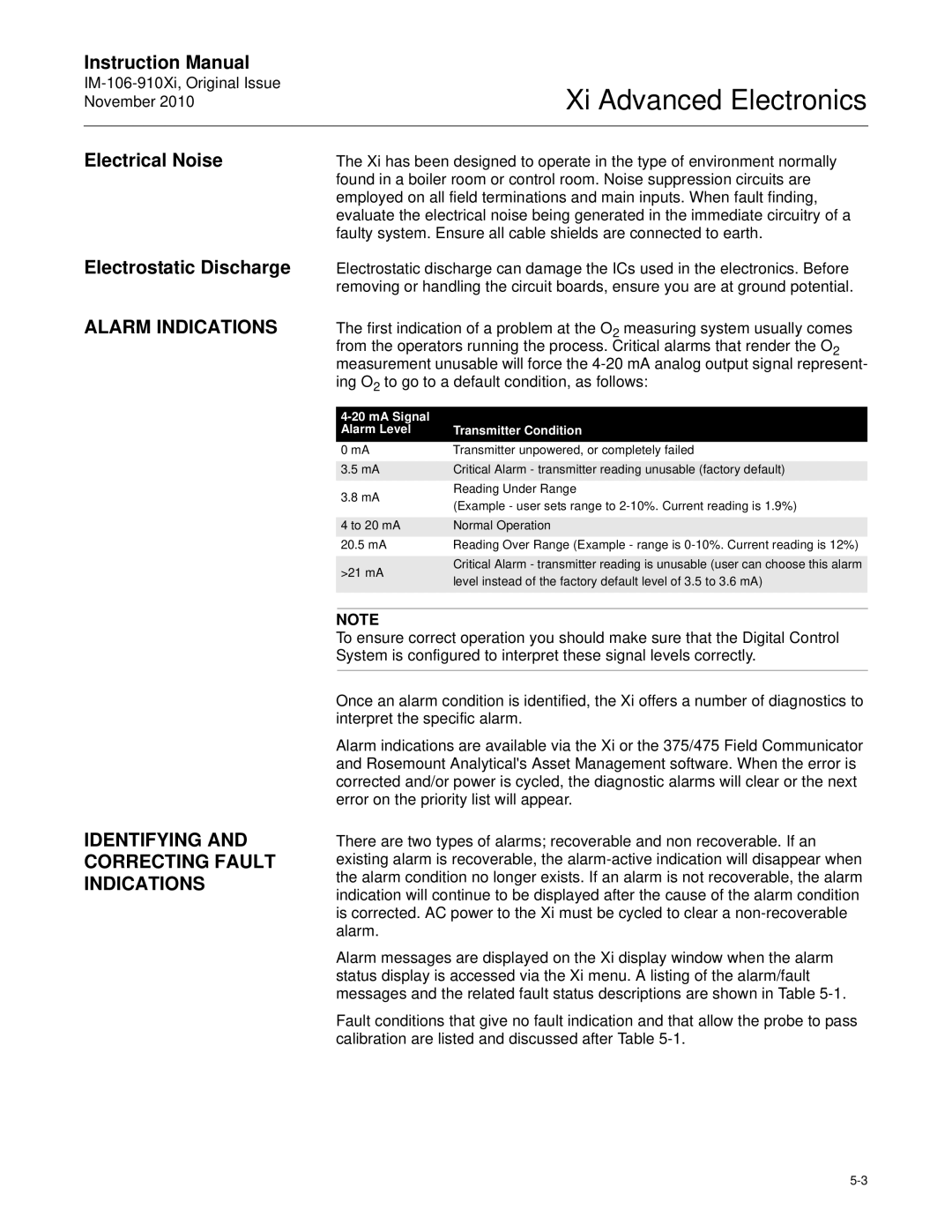
Instruction Manual
IM-106-910Xi, Original Issue November 2010
Xi Advanced Electronics
Electrical Noise
The Xi has been designed to operate in the type of environment normally found in a boiler room or control room. Noise suppression circuits are employed on all field terminations and main inputs. When fault finding, evaluate the electrical noise being generated in the immediate circuitry of a faulty system. Ensure all cable shields are connected to earth.
Electrostatic Discharge
ALARM INDICATIONS
Electrostatic discharge can damage the ICs used in the electronics. Before removing or handling the circuit boards, ensure you are at ground potential.
The first indication of a problem at the O2 measuring system usually comes from the operators running the process. Critical alarms that render the O2 measurement unusable will force the
|
| |
Alarm Level | Transmitter Condition | |
0 mA | Transmitter unpowered, or completely failed | |
|
| |
3.5 mA | Critical Alarm - transmitter reading unusable (factory default) | |
3.8 mA | Reading Under Range | |
(Example - user sets range to | ||
| ||
|
| |
4 to 20 mA | Normal Operation | |
20.5 mA | Reading Over Range (Example - range is | |
|
| |
>21 mA | Critical Alarm - transmitter reading is unusable (user can choose this alarm | |
level instead of the factory default level of 3.5 to 3.6 mA) | ||
| ||
|
|
IDENTIFYING AND CORRECTING FAULT INDICATIONS
NOTE
To ensure correct operation you should make sure that the Digital Control System is configured to interpret these signal levels correctly.
Once an alarm condition is identified, the Xi offers a number of diagnostics to interpret the specific alarm.
Alarm indications are available via the Xi or the 375/475 Field Communicator and Rosemount Analytical's Asset Management software. When the error is corrected and/or power is cycled, the diagnostic alarms will clear or the next error on the priority list will appear.
There are two types of alarms; recoverable and non recoverable. If an existing alarm is recoverable, the
Alarm messages are displayed on the Xi display window when the alarm status display is accessed via the Xi menu. A listing of the alarm/fault messages and the related fault status descriptions are shown in Table
Fault conditions that give no fault indication and that allow the probe to pass calibration are listed and discussed after Table
